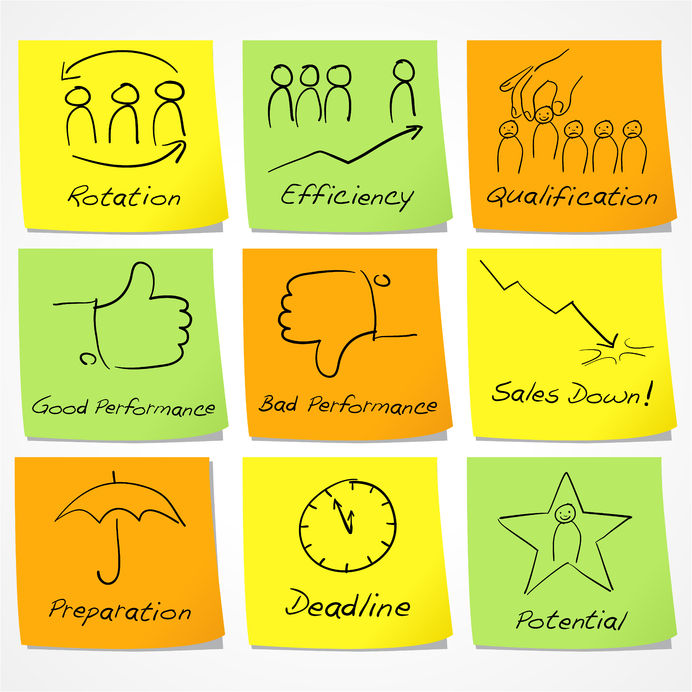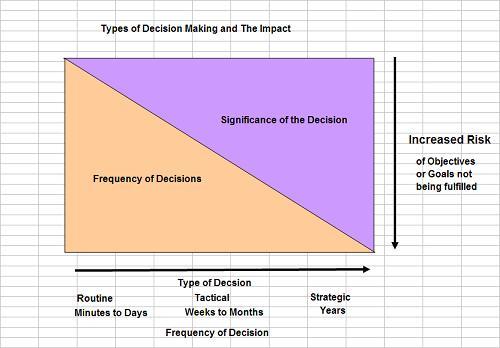Types of Decision Making

Image Copyright : rudall30 @123RF
There are three main classifications or types of decision making supported by business intelligence. They can be characterised by their frequency and impact on the organisation.
Click here for a definition of decision making
The impact can be quantified in terms of risk of failure or mishap and by the level of financial success achieved.
It can take many years for the consequences of a decision to appear. The time for the effect of a decision to be seen is a useful and important way of classifying the potential impact of decisions.
The diagram shown on the data warehouse basics page also reflects the classification stated here.
There are three types
- Strategic
- Tactical
- Routine or Operational
Each of these types of decision can also be defined by the type of data needed to support them. These decisions should be classed as data driven decision making.
Potential Impact of the Types of Decision Making
The following chart depicts the frequency of decision and types of decision making against its potential impact on the organisation

Strategic Decisions are usually infrequent e.g. annually but can have a huge impact on the organisation. For example
- Select a Market
- Acquire a Company
- Recruit additional staff
Tactical Decisions are more frequent e.g. weekly, monthly. Examples would be:
- Change product pricing
- Reschedule work
- Reorganise a department
The impact of these types of decision is of a medium nature in terms of risk to the organisation and impact on profitability.
The data used to drive this type of decision is usually found in summaries of routine transactions e.g. sales orders from the next level or classification.
Operational or Routine Decisions are usually very frequent e.g. hourly, daily but can have a lesser impact on the organisation. For example
- How to answer a sales enquiry
- Approve a quotation
- Approve an Invoice
The data used to drive this decision type is usually prescribed or defined in the procedures and rules of the organisation.
Click on the following link to find out what type of decision maker you are
Which of the 5-kinds of decision maker are you
What to Learn more about Decision Making
Find out more about decision making - see the following links:
- Decision Making Software
- Key Decision Making Steps lead to a Great Business
- Key Decision Making Tips
- Decision Making Models
- Intuitive Decision Making
- Rational Decision Making
- A Better Decision Making Model
- Key Factors in a Decision Making Process
- Use a PICK chart to Simplify Decisions
Go to Top of 'Types of Decision Making' page
Back To 'What is Business Intelligence' page
Back to 'Business Intelligence' Home Page